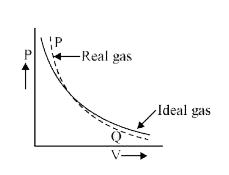A gas P is obtained at anode during the electrolysis of brine. The gas P when treated with excess of NH3 released a diatomic gas Q. Find the value of (x - y) where x & y are the molar mass of P and Q.
The correct Answer is:43
Step by step video, text & image solution for A gas P is obtained at anode during the electrolysis of brine. The gas P when treated with excess of NH_3 released a diatomic gas Q. Find the value of (x - y) where x & y are the molar mass of P and Q. by Chemistry experts to help you in doubts & scoring excellent marks in Class 12 exams.
Topper's Solved these Questions
- BOOK - RESONANCECHAPTER - P-BLOCK ELEMENTS (HALOGEN & NOBLE GASES)EXERCISE - EXERCISE-2 PART-315videos
P-BLOCK ELEMENTS (HALOGEN & NOBLE GASES)
- BOOK - RESONANCECHAPTER - P-BLOCK ELEMENTS (HALOGEN & NOBLE GASES)EXERCISE - EXERCISE-2 PART-416videos
P-BLOCK ELEMENTS (HALOGEN & NOBLE GASES)
- BOOK - RESONANCECHAPTER - P-BLOCK ELEMENTS (HALOGEN & NOBLE GASES)EXERCISE - EXERCISE-2 PART-116videos
P-BLOCK ELEMENTS (HALOGEN & NOBLE GASES)
- BOOK - RESONANCECHAPTER - P-BLOCK ELEMENT (BORON AND CARBON FAMILY)EXERCISE - PART - III : OLYMPIAD PROBLEMS (PREVIOUS YEARS) STAGE - V (INTERNATIONAL CHEMISTRY OLYMPIAD (IChO)) Problem 38videos
P-BLOCK ELEMENT (BORON AND CARBON FAMILY)
- BOOK - RESONANCECHAPTER - PERIODIC TABLE & PERIODICITYEXERCISE - Advanced Level Problems107videos
PERIODIC TABLE & PERIODICITY
Similar Questions
A metal carbonate X on reacting with an acid gives a gas which when passed through a solution Y gives the carbonate back. On the other hand, a gas G that is obtained at anode during electrolysis of brine is passed on dry Y, it gives a compound Z, used for disinfecting drinking water . Identify X,Y,G and Z.
View SolutionA metal carbonate X on reacting with an acid gives a gas which when passed through a solution Y gives the carbonate back. On the other hand, a gas G that is obtained at anode during electrolysis of brine is passed on dry, it gives a compound Z, used for disinfecting drinking water . Identify X,Y,G and Z.
View Solution
Knowledge Check
- Question 1 - Select One
The molar heat capacity in a process of a diatomic gas if it does a work of Q4 when a heat of Q is supplied to it is
A25RB52RC103RD67R - Question 2 - Select One
Two separate bulbs contains ideal gases P and q, respectively maintained at the same temperature. The density of gas P is twice of that of the Q, and the molecular weight of the gas P is half of that of the gas Q. The ratio of the pressure of gas P to that of gas Q is
A2B1/2C4D1/4 - Question 3 - Select One
If p∈R and q=logx(p+√p2+1), then find the value of p in terms of x and q.
Axq+x−q2Bxq−x−q2Cxq+x−qDxq−x−q
If the molar specific heat at constant pressure for a polyatomic non-linear gas is x and the molar specific heat at constant volume for a diatomic gas is y, find the value of x/y.
View SolutionIf p(x)=x3+3 and q(x)=x−3 then find the value of p(x).q(x)
View SolutionA and B each throw simultaneously a pair of dice. If the probability that they obtain the same score be pq, where pandq are coprimes then find the value of p+q.
View SolutionAt point P and Q, the real gas deviation with respect to ideal gas is respectively :
 View Solution
View SolutionIn a process, the molar heat capacity of a diatomic gas is 103R. When heat Q is supplied to the gas, find the work done by the gas
View Solution

